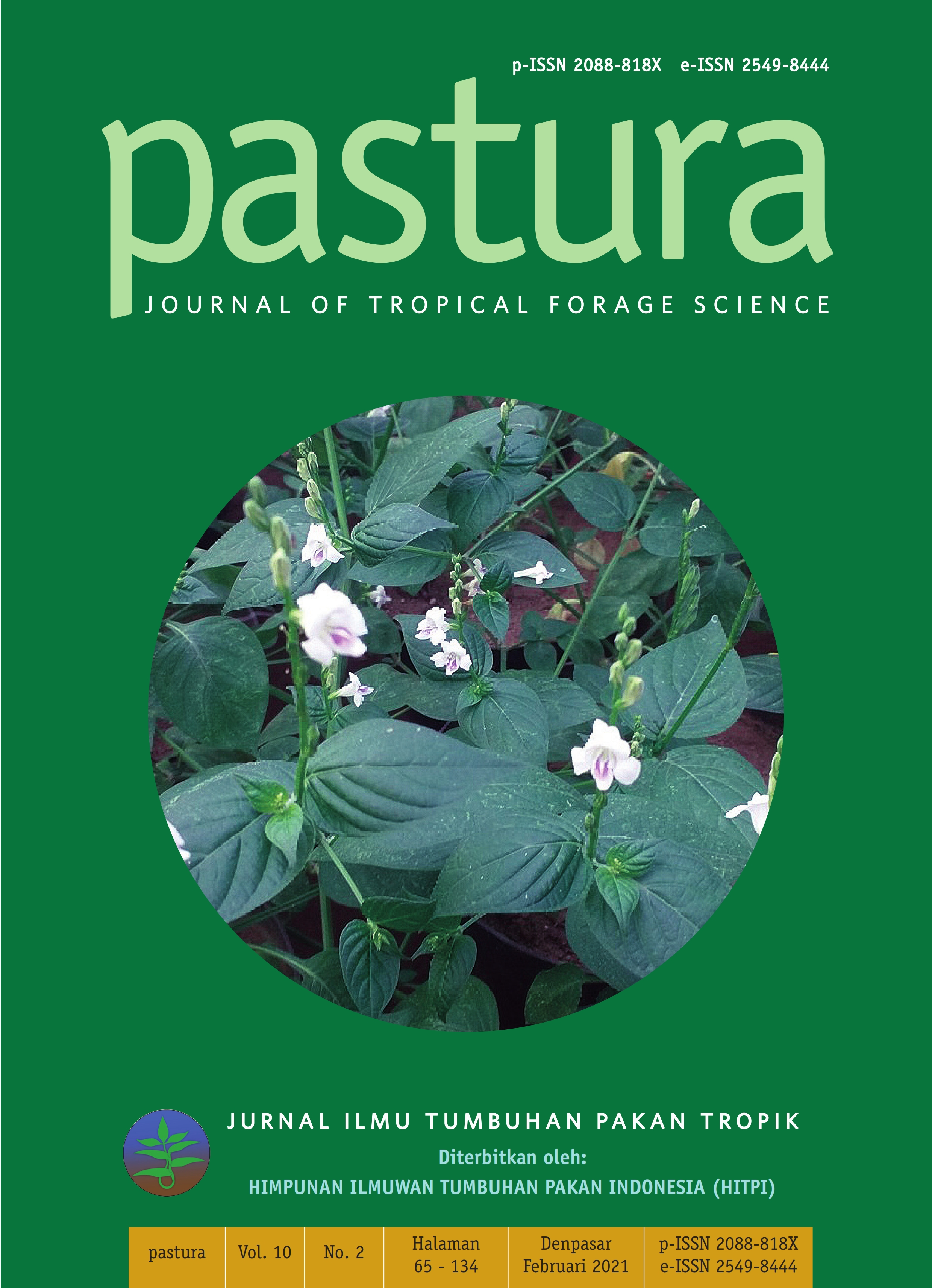CHARACTER OF AGRONOMICS SORGUM VARIETY OF PAHAT THAT PLANTED IN DIFFERENT PLANT SPACING
Abstrak
The study aims to determine the agronomic trait (KA) of the Pahat sorghum variety (VP) planted at
different plant spacing (JT) on marginal land. Sorghum VP was planted on JT 25 cm × 25 cm (JT1), 20 cm
× 20 cm (JT2), 15 cm × 15 cm (JT3) and 10 cm × 10 cm (JT4), each treatment consisted of 4 replications
using a complete randomized design and continued BNJ test. The results of the diversity analysis showed
that the JT treatment had a significantly different effect on plant height (TT), leaf length (PD) and leaf width
(LD) with a significance value, but gave no significant effect of panicle height (TM). The results of the BNJ
test showed that the JT1 treatment resulted in a significantly higher TT compared to JT2, JT3 and JT4.
JT1 treatment produces real PD longer than JT2, JT3 and KT4. JT1 treatment produces significantly wider
LD than JT2, JT3 and JT4. Conclusion of the study that JT1 sorghum VP produces the best agronomic
character in TT, JD, LD compared to JT2, JT3 and JT4
Keywords: agronomic character, planting density, sorghum Pahat
##plugins.generic.usageStats.downloads##
Authors who publish with this journal agree to the following terms:
- All articles published by Pastura Journal Of Tropical Forage Science are made available under an open access license worldwide immediately. This means everyone has free and unlimited access to the full-text of all articles published in Pastura Journal Of Tropical Forage Science, and everyone is free to re-use the published material given proper accreditation/citation of the original publication. Open access publication is supported by authors' institutes or research funding agency by payment of a comparatively article processing charge for accepted articles (See Author Fees). Pastura Journal Of Tropical Forage Science publish articles under the Creative Commons Attribution License.
- Authors are able to enter into separate, additional contractual arrangements for the non-exclusive distribution of the journal's published version of the work (e.g., post it to an institutional repository or publish it in a book), with an acknowledgement of its initial publication in this journal.
- Authors are permitted and encouraged to post their work online (e.g., in institutional repositories or on their website) prior to and during the submission process, as it can lead to productive exchanges, as well as earlier and greater citation of published work (SeeThe Effect of Open Access).





